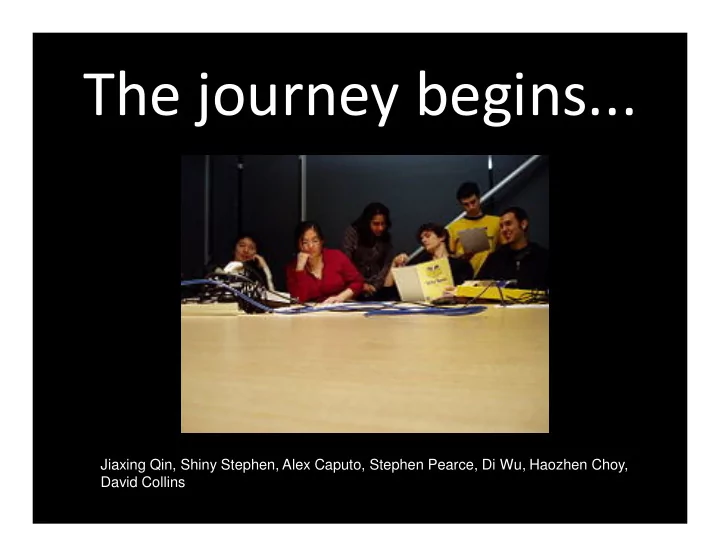

The journey begins... Jiaxing Qin, Shiny Stephen, Alex Caputo, Stephen Pearce, Di Wu, Haozhen Choy, David Collins
Melbourne ‘08
BioClock • Temporal Control in E.coli • A customizable regulatory system • One signal switches between multiple states SIGNAL Original 1 2 3 State
A binary clock -the original plan Goal Corresponds to Red Blue Green R B G to Time Ex: Counting to seven with three-color system 0 0 0 0 0 0 1 1 0 1 0 2 3 0 1 1 1 0 0 4 5 1 0 1 1 1 0 6 =2 2 + 2 1 + 2 0 1 1 1 7
Binary Model -the good and bad • Each “bit” would • High multipilicity demand a unique => greater scope set of biological for expansion parts
In comes the Linear Model • Similar components to Binary Model, but different interactions=>translatable • Proof of principle
Pause for an outline • Components 1. Red light sensor 2. Positive feedback 3. Riboswitch • Linear Model Design • Modelling • Wetlab
Red Light Sensor EnvZ- OmpR
Positive Feedback • Feedback loop that upregulates itself
Riboswitch crRNA taRNA RiboKey RiboLock
Linear Model
Step by step... In the dark
Kick start the system with red light
System: state 1
Preparing for state 2
State 2
Modelling Matlab (Mathworks) JDesigner2 (System Biology Workbench)
Time for hands-on work in the lab- Red light sensor Plan of action • Make PCB and Cph8 (from Voigt lab, UCSF) into biobricks and test • Replace OmpC promoter with OmpF • Using existing biobricks create construct: pLacI-RBS-ho1-RBS-pcyA-RBS-Cph8-Ter-OmpF- RBS-GFP-Ter
Time for hands-on work in the lab- Red light sensor Progress • Double transformation of PCB and Cph8 using 3 different antibiotics; used blue-white screening. • Expected result: white colonies in light; blue colonies in dark • Observed result: blue colonies in light and dark
Time for hands-on work in the lab - Red light sensor Troubleshooting • Voigt lab had 100W mercury vapour lamp and special incubator; we used an incandescent lamp => could be that the light intensity and wavelength were not optimal
Time for hands-on work in the lab -Positive feedback Challenges • Naturally not common occurrence in bacteria • Need a different one for each component
Time for hands-on work in the lab -Riboswitches Plan of action • Use existing biobricks to construct pLacI-key- Ter • pTet-lock-GFP-Ter-Ter
Colony PCR of key3c+pLacI ligation 1 3 500
XbaI/SpeI double digest of key3c+pLacI ligation Uncut XbaI/SpeI 1 3 1 3 500 400
Time for hands-on work in the lab - Riboswitches Achievements • New biobrick BBa_K085000 R0010 J23008 • New biobrick BBa_K085005 R0010 J23008 B0024
Final thoughts... • Modelling showed that system could work. • Need to work on input signal -Red light -Other signals? • Off protein • Fitting parts together
Special Thanks! • Bio21 Institute—Department of Biochemistry and Molecular Biology – Heung-Chin Cheng, Paul Gooley, Sally Gras • The University of Melbourne • City of Melbourne • Voigt lab UCSF • Coburg Senior High School (specially Jenny & Melissa)
Recommend
More recommend